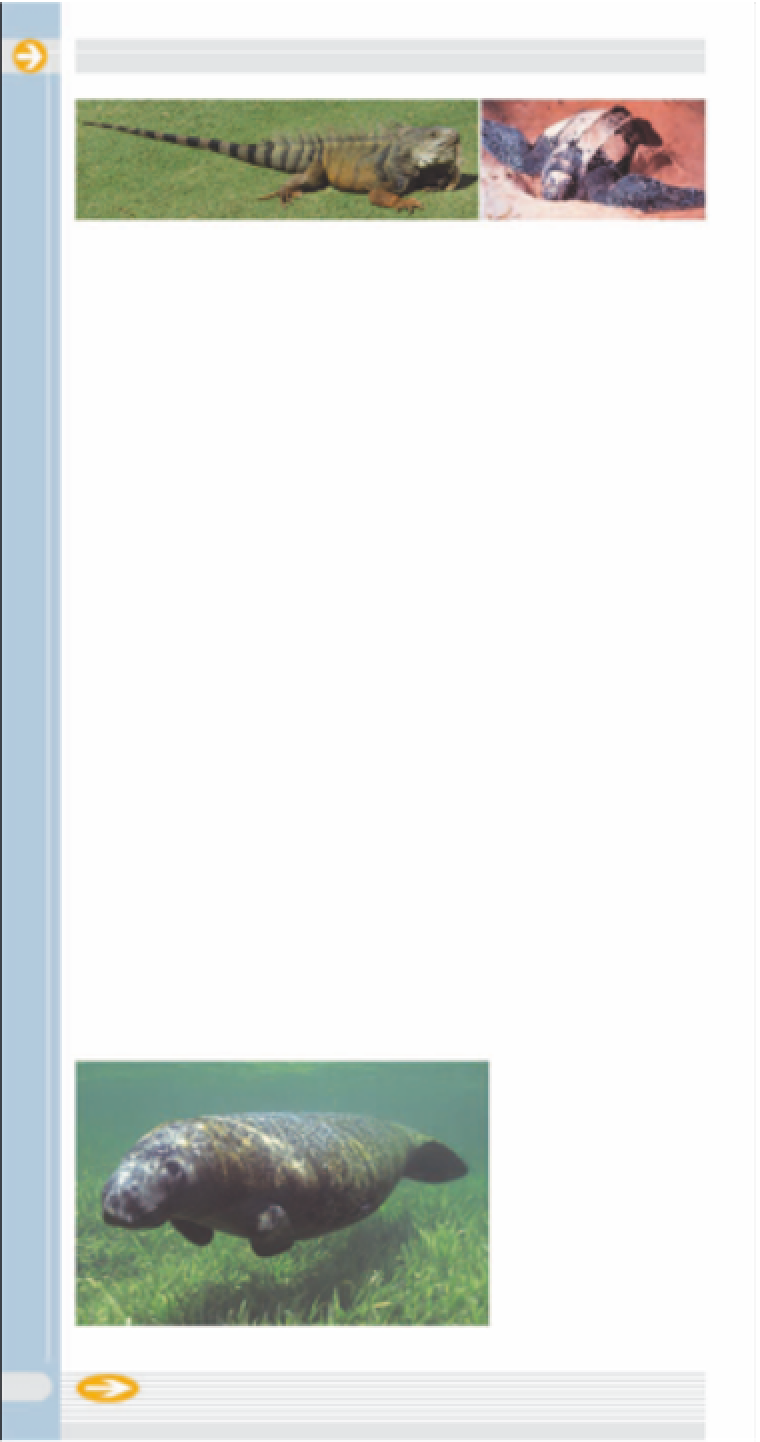Travel Reference
In-Depth Information
Left
Mona iguana
Right
Leatherback turtle
Animal Life
!
Leatherback Turtles
feed on aquatic vegetation. The
West Indian manatee is
endangered - many are killed
by collisions with speedboats.
$
Ponce Anoles
These are the largest of the
five marine turtle species that
nest on Puerto Rican beaches,
notably on Vieques and Culebra.
Unlike other turtles, which have
internal skeletons, leatherbacks
have bony plates covered with
an external leathery skin. They
feed mainly on jellyfish.
@
Sapo Conchos
These bright-green, tree-
dwelling lizards are nicknamed
lagarjito gigantes
(giant lizards).
Like all anoles, they mark their
territory by extending a fan-like
dewlap beneath the neck and
by bobbing up and down. Keep
an eye out for ponce anoles
performing this comic behavior
on tree trunks.
%
Coquís
These endemic toads have a
long, curved snout and horned
protuberances above the eyes.
Once widespread, they are now
restricted to the Bosque Estatal
de Guánica
(see p83)
and are
threatened with extinction, partly
due to competition from the
toxic marine toad, introduced to
the island in the 19th century to
control insects.
£
Manatees
These thimble-sized frogs
are the nation's unofficial
mascots. Inhabiting various
ecosystems, from coastal dry
forest to rain-soaked El Yunque,
they are more often heard than
seen, thanks to their nocturnal
two-note cheep - “ko-KEE .
^
Dolphins
Manatees are gentle marine
mammals resembling a tuskless
walrus, and weigh up to half a
ton (500 kg). They propel them-
selves with a spatulate tail and
Several species of these
endearing, sociable, and highly
intelligent marine
mammals swim in
the ocean waters
surrounding Puerto
Rico. They often
accompany passing
boats, such as the
Fajardo-Vieques ferry
(see p98)
, and are
popular in marine
parks, where many
are trained to perform
amazing acrobatics.
Manatee
54




































